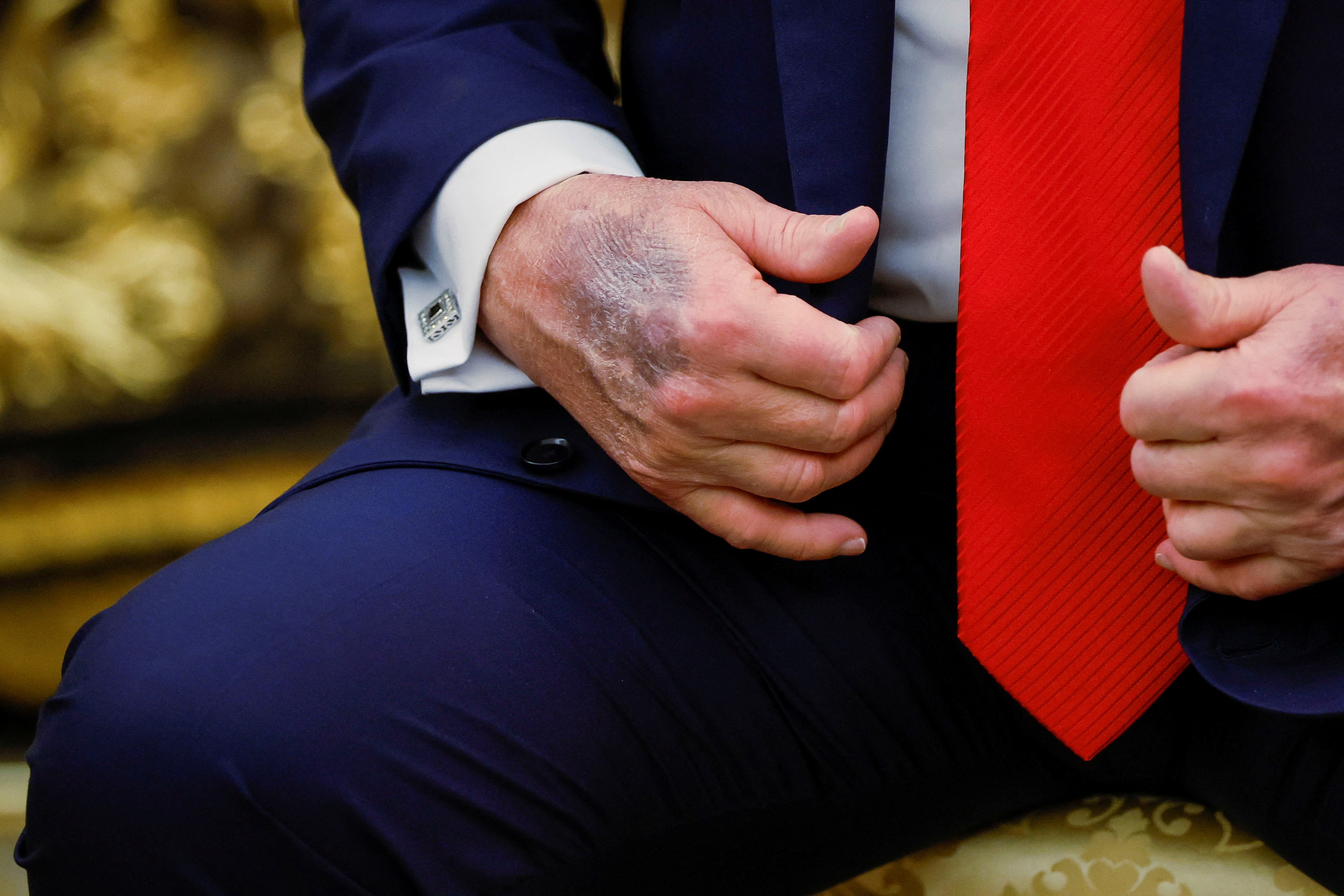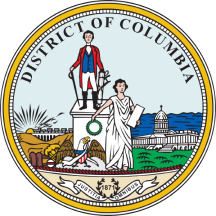
In a striking Oval Office moment Monday, President Donald Trump seemed unusually eager to shield a bruise on his hand from view. He repeatedly obscured his right hand, resting it beneath his left or even hiding both hands beneath the desk.
Earlier on Friday, public speculation had intensified following a visible patch of makeup on the president's hand.
Although the mismatched concealer that sparked speculation earlier in the week had faded, the discolored bruise remained noticeable despite his efforts, the Daily Beast reports. When he wasn’t clasping one hand over the other, Trump discreetly tucked both out of sigh. Still, during moments like signing executive orders or gesturing, the mark remained unmistakable, per the report.
READ MORE: 'Withdrawn': GOP senator jolts MAGA by saying Trump DOJ pick lacks votes for confirmation
Just a few days earlier, a heavy glob of tan concealer had been clearly apparent on his hand, its tone noticeably at odds with his natural skin tone. Trump made a similar attempt to cover it during multiple public appearances in Washington, D.C. The cosmetic choice quickly drew criticism and renewed medical curiosity.
Since February, toward the latter half of most months, photos have repeatedly shown him applying makeup to — or trying to hide — bruising on his hand.
The report further noted that the White House has consistently attributed these marks to what Press Secretary Karoline Leavitt characterized as the president’s tireless handshaking. "He meets more Americans and shakes their hands on a daily basis than any other president in history," the press secretary said in February
Trump, who turned 79 earlier this year, was diagnosed with Chronic Venous Insufficiency (CVI) in July, a condition common among those his age, in which veins struggle to return blood from the legs to the heart. The condition often results in swelling and discoloration.
READ MORE: How the worst memo in history gave us the disaster that is President Donald Trump
Both the physical signs and his cosmetic maneuvers have become emblematic of a broader debate over how illness and aging are presented, or concealed, in the public eye.

 AlterNet
AlterNet
 The Daily Beast
The Daily Beast Local News in D.C.
Local News in D.C. America News
America News Newsweek Top
Newsweek Top Raw Story
Raw Story Deadline Politics
Deadline Politics Reuters US Top
Reuters US Top Page Six
Page Six